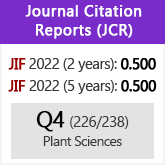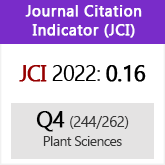Morfología y anatomía del cefalio de Cephalocereus senilis (Cactaceae)
DOI:
https://doi.org/10.3989/ajbm.2005.v62.i2.16Keywords:
cacti, Cephalocereus, chlorenchyma, columnar habit, flowering zone, Hidalgo, lateral cephalium, paedomorphosis, periderm, pseudocephalium, viejito. cacti, viejitoAbstract
We study the morphology and anatomy of Cephalocereus senilis (Haw.) Pfeiff. flowering zone to describe and compare it with the information available for other species. We described in detail the vegetative and reproductive branches. Results show that there are morphological changes linked to anatomical ones after the flowering zone is differentiated. The flowering zone in this species is termed lateral cephalium by its interareolar space reduction, areole size increment, and high production of long bristles and trichomes in the areoles. Moreover, periderm development near the apical meristem, lack of chlorenchyma and a delay in xylematic fibers differentiation are traits related with the lateral cephalium. The lateral cephalium of C. senilis shows modifications previously reported for the Espostoa species with lateral cephalium, except for the presence of crystals in the trichomes, the addition of new ribs to the cephalium, and the growth in xylem and phloem parenchyma.
Downloads
Download data is not yet available.
Downloads
Published
2005-12-30
How to Cite
Vázquez-Sánchez, M., Terrazas, T., & Arias, S. (2005). Morfología y anatomía del cefalio de Cephalocereus senilis (Cactaceae). Anales Del Jardín Botánico De Madrid, 62(2), 153–161. https://doi.org/10.3989/ajbm.2005.v62.i2.16
Issue
Section
Articles
License
Copyright (c) 2005 Consejo Superior de Investigaciones Científicas (CSIC)

This work is licensed under a Creative Commons Attribution 4.0 International License.
© CSIC. Manuscripts published in both the printed and online versions of this Journal are the property of Consejo Superior de Investigaciones Científicas, and quoting this source is a requirement for any partial or full reproduction.All contents of this electronic edition, except where otherwise noted, are distributed under a “Creative Commons Attribution 4.0 International” (CC BY 4.0) License. You may read here the basic information and the legal text of the license. The indication of the CC BY 4.0 License must be expressly stated in this way when necessary.
Self-archiving in repositories, personal webpages or similar, of any version other than the published by the Editor, is not allowed.
















